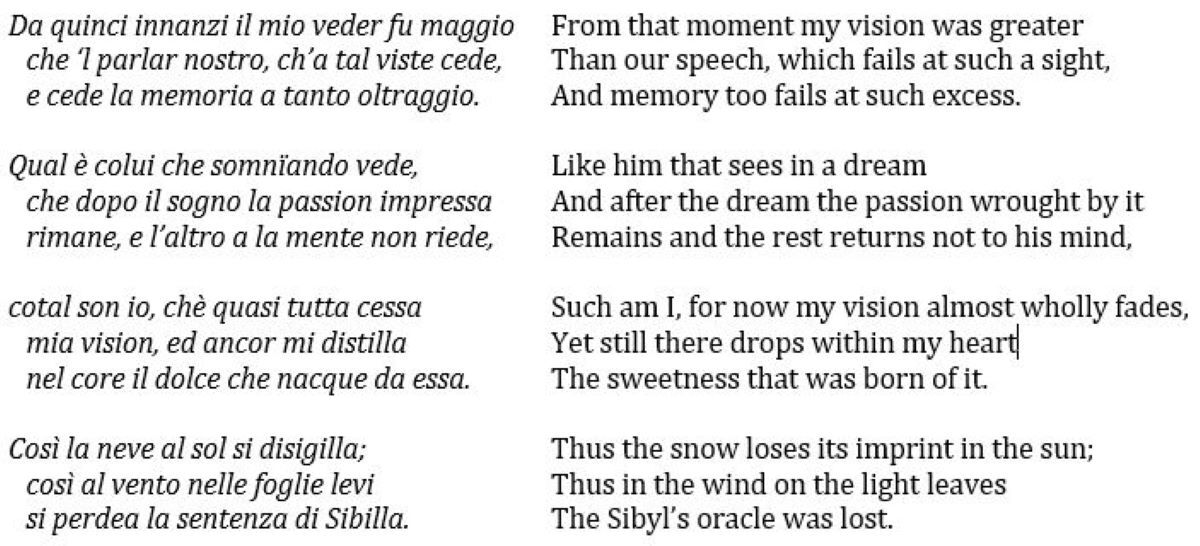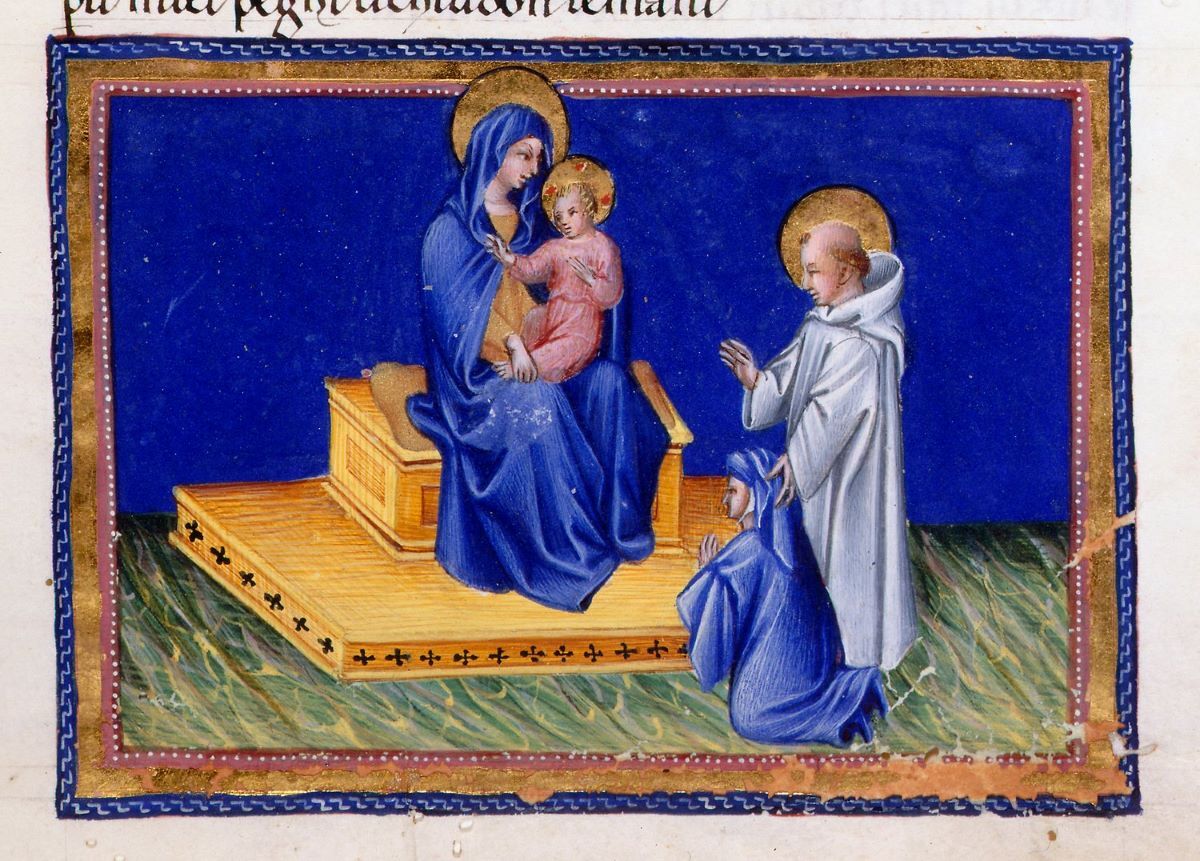In the final canto of the Paradiso, Dante is given a moment of perfetto veder, “perfect sight” – of union with the divine, when the seer and the seen become one. As his poem builds to this sublime climax, its creator loses his battle with language, yet captures that loss with words of such surpassing beauty that they convey victory, not defeat.
The canto begins with St Bernard’s prayer to the Virgin Mary, that she disperse any remaining cloud of Dante’s mortality and grant him the beatific vision. At the end of the prayer, St Bernard signals to Dante that he should look up. He is already doing so, and feels his sight become purer as he gazes into the “lofty light that in itself is true”.
Then comes this:

Every one of the 33 cantos of the Paradiso is about vision. It’s the story of the cumulative cleansing of Dante’s sight as, re-united with Beatrice, he grows, under her tuition, in his knowledge of the divine. In each canto the poetry of light scales new heights, each more resplendent than the last. The smile of Beatrice, at first dimmed for fear of blinding the poet, becomes ever more radiant as she leads him up through the planetary spheres to the heaven of the fixed stars, the Primum Mobile and finally the Empyrean – the dwelling place of the divine, the angels and the redeemed, beyond space and time.
The Paradiso is also, supremely and preternaturally, about language – the struggle to express the inexpressible. Trasumanar significar per verba non si porïa, “Passing beyond the human cannot be expressed in words,” Dante writes in Canto 1, coining a neologism, trasumanar, that concisely conveys his thought yet at the same time refutes it: the poet can and does find the right words, minting brand new ones as well as combining old ones in new ways to communicate the mystery of his experience.
Yet here, on the edge of the beatific vision, words fall away. Memory too is eclipsed and the poet is left with the sweetness of the dream, but not its substance. There is a sadness in these losses. And in this sadness Dante turns back to the natural world, to find there images that express both the fading of his vision and the traces it has left, the simultaneous self-concealment and self-revelation of the divine – in a footprint in the snow whose outlines have melted under the sun; in a whispering breeze through leaves that both carries and conceals a message. He evokes two contrasting seasons and senses – winter and summer, sight and hearing – as if to say that the signs are always and everywhere around us if we can but fine-tune our faculties to read them. These lines are beautiful beyond measure – and nothing I can say about them will ever do them justice.

Sometimes, on a breezy summer’s day, here at my Devon farmhouse, when I listen to the sighing of a poplar and see its leaves ripple as they turn in the sunlight, I get a taste of what Dante means here. And I’m suddenly with Dylan: “The answer, my friend, is blowin’ in the wind…”
I hope that, through these first three introductory notes, you too have had that taste. If I have whetted your appetite and you’d like to know more, please accompany me as I continue this exploration of Europe’s greatest mystic poet.
Genius line:
Così la neve al sol si disigilla – An image within an image. Si disigilla means “unseals itself”. So, the loss of Dante’s vision is like snow melting in sun, which is like a wax seal melting.







